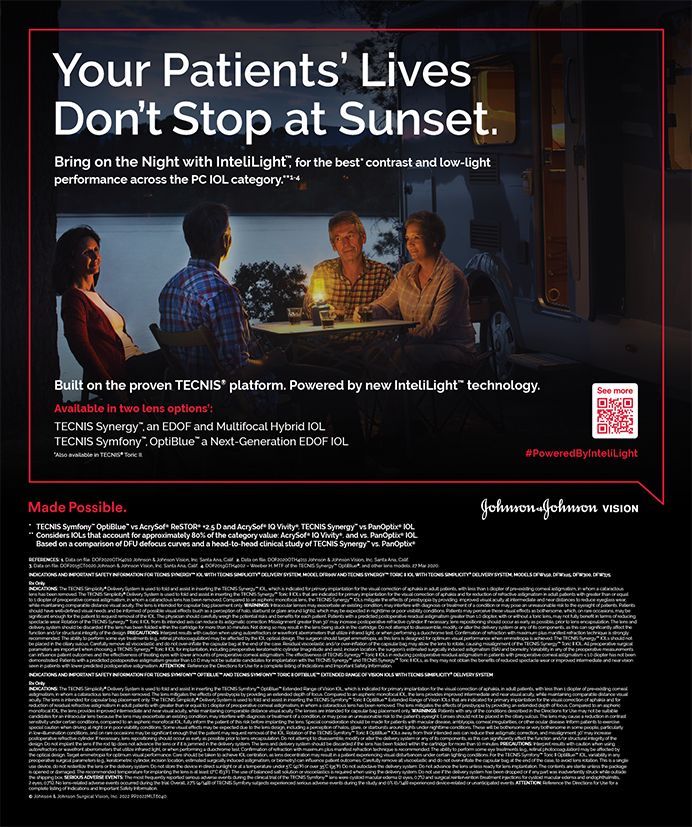
The cornea-strengthening procedure CXL provides surgeons with a method to improve the quality of life for many patients with keratoconus, post-LASIK ectasia, and other degenerative corneal disorders. At the same time, the procedure can reduce the cost burden on insurers, thereby sparing patients the need to undergo a corneal transplant.
The FDA approval of Avedro’s system for epithelium-off (epi-off) CXL in 2016 was just the beginning. In the next step in this journey, it will fall to our profession to demonstrate the potential benefits of CXL for all parties involved and to work with insurance companies to make certain that the procedure is covered for every patient who needs it. More efficient variations of the Dresden epi-off protocol, novel methods such as epithelium-on (epi-on) CXL, and other improvements in the procedure may make CXL more attractive, broaden its indications, and provide surgeons with data to petition more carriers to offer coverage.
CURRENT SOLUTIONS
The epi-off Dresden protocol is the only FDA-approved CXL technique at present. Although epi-off is effective, it is a tedious technique that takes well over an hour. Many variations for accelerated CXL have been proposed, and these could potentially save both time and money, thereby improving workflow efficiency in the clinic.
The effect of CXL is optimized by achieving the right combination of riboflavin solution, UV light energy, and oxygen. Right now, oxygen diffusion into the cornea is the limiting factor in this equation. Voracious epithelial metabolism is a major barrier preventing oxygen from reaching the stromal depth needed to fully crosslink the corneal collagen, which is one reason the epithelium is removed under current parameters. Providing a safe source of oxygen diffusion during CXL is the next big step.
US clinical trials to evaluate epi-on CXL, sponsored by Avedro, are set to begin. Epi-on CXL has been used by surgeons and investigators all over the world, and it already has been used off-label by some ophthalmologists in this country. The advantages of this approach for the patient include less discomfort, less risk for subepithelial haze, and improved safety with a markedly reduced risk of infectious keratitis. Once the various parameters of this procedure have been studied in large populations, I believe the efficacy of epi-on CXL will be shown to be equal to that of epi-off CXL.
NEXT STEPS
The potential for improvement of CXL is exciting. Clinicians are investigating the use of different photosensitizers and different wavelengths to optimize the procedure, open it up to new patient populations, improve rigidity in thin corneas, ameliorate irregular astigmatism, reduce opacity, and sterilize infectious keratitis.
There may also be ways to further adapt epi-off procedures. Protocols are under way around the world using combined PRK and CXL to stabilize the cornea and at the same time reshape corneal architecture to reduce corneal irregularity, spherical error, and astigmatism.
The science of CXL is progressing in a way that will truly improve patient care. One of the avenues being explored is the potential to use CXL to treat myopia or presbyopia. Applying intrastromal energy with augmentation from customized forms of riboflavin and oxygen supplementation enables treatment patterns to either steepen or flatten the cornea.
And finally, there is interest in the use of CXL to treat infectious keratitis. It has been observed that the procedure kills a wide variety of bacteria. Novel photosensitizers and paired optimal wavelengths may prove to be equally effective against even more challenging organisms such as fungi or amoebae. CXL could be an excellent adjunctive process to immediately deactivate rapidly growing organisms in patients with infectious keratitis, and perhaps to reduce not only scarring but also postinfectious ectasia, irregular astigmatism, and potentially the incidence of perforation.
SAVING MONEY, REDUCING RISK
In my experience, it is far easier to have a corneal transplant approved by an insurance company than CXL. This is frustrating for a number of reasons. For insurance carriers, that corneal transplant could cost well over $20,000, but CXL—a procedure that clearly delays and most likely eliminates the need for a transplant down the road—requires as little as 20% of that cost. Granted, penetrating keratoplasty or deep anterior lamellar keratoplasty can be life-changing procedures for patients with advanced scarring and distortion. Nevertheless, from the patient’s standpoint, CXL is a noninvasive treatment that carries far fewer risks than transplantation, which include long-term steroid use, consecutive cataract and glaucoma, suture complications, wound dehiscence, and rejection. There is a dual opportunity, therefore, to reduce the need for an invasive, life-disrupting surgery, and to simultaneously save money and precious donor corneal tissue for the health care system.
Eliminating or delaying the need for a corneal transplant saves patients frustration, expense, lost work, and numerous postoperative clinic visits. We can also reduce compliance challenges from necessary chronic antirejection medications and reduce the risk of significant postoperative complications. Helping patients with their vision at a young age by avoiding an invasive and expensive surgical intervention should be considered a win-win-win for patients, physicians, and payers.
THE PATH TO COVERAGE
Ophthalmologists must be persistent in protesting the current lack of coverage for CXL. We must focus on presenting more data that demonstrate the benefits of this procedure, including economic data. Currently, at least one insurance carrier in more than 35 states will cover CXL. Organized ophthalmology can work to expand that number. There is a lot of work to be done before the procedure becomes widely available to younger patients with limited resources to cover health care expenses as well as those who are otherwise covered by full-benefit insurance plans.
Some of the most aggressive cases of keratoconus affect young patients who do not have insurance coverage or the means to pay out-of-pocket for CXL. At Virginia Eye Consultants, we have a program we call Looking Forward, Giving Back, through which we offer free surgery, including CXL, to 50 deserving individuals per year. We are pleased to offer this service, but it only scratches the surface of the number of patients truly in need. Right now, we have 200 people on a waiting list for a clinical trial in which they may get the procedure done for no cost.
Before epi-off CXL was approved in this country, I frequently referred patients with sufficient means to Canadian practitioners, who had access to the procedure long before we did and thus had extensive clinical experience. This practice created an unfortunate, two-tiered health care system divided by monetary wealth. Since the approval, we are focusing our efforts instead on petitioning insurance carriers to cover this invaluable service.




